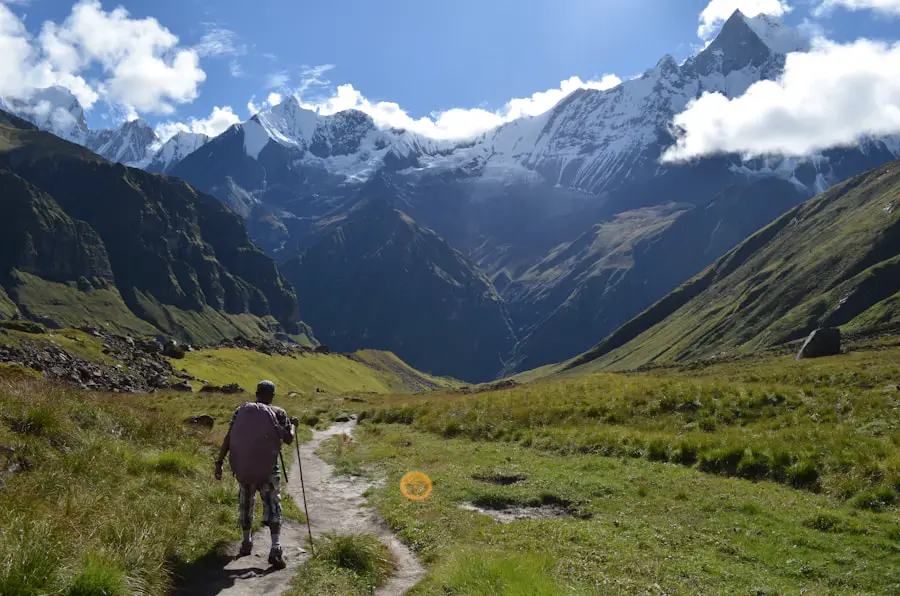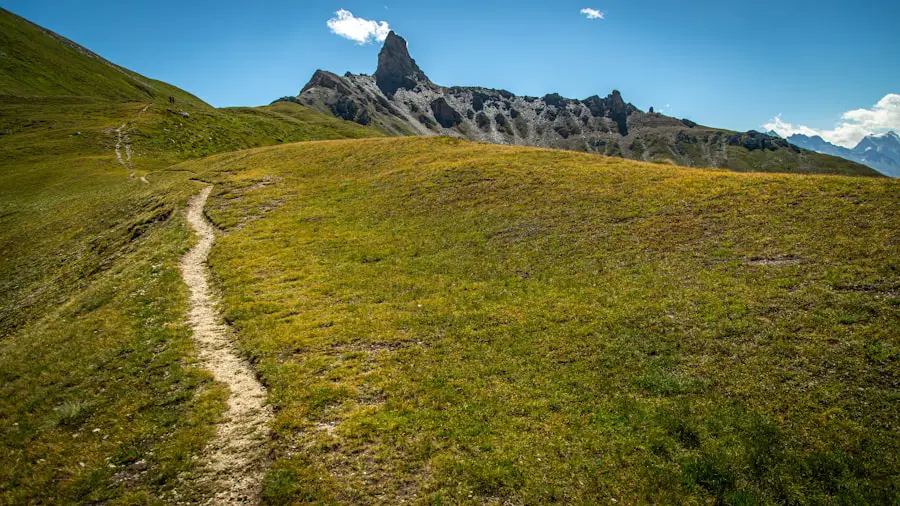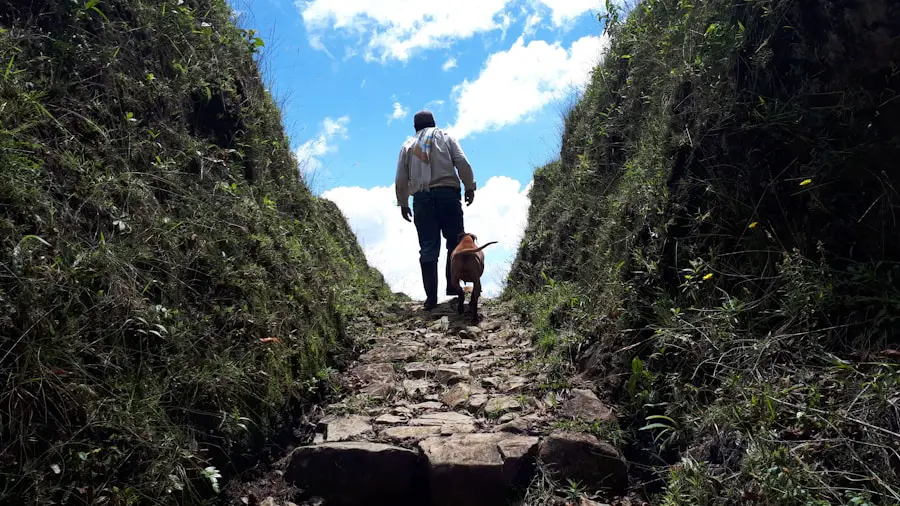The Appalachian Trail (AT) is a remarkable feat of human endeavor, stretching over 2,190 miles from Springer Mountain in Georgia to Mount Katahdin in Maine. Its conception can be traced back to the early 20th century, when Benton MacKaye, a forester and regional planner, envisioned a long-distance hiking trail that would connect the rural communities of the Appalachian Mountains. In 1921, MacKaye published an article outlining his vision, which included not only a trail for recreation but also a means to promote conservation and sustainable living.
His idea was revolutionary, as it sought to create a space where people could reconnect with nature while fostering a sense of community among hikers. The first section of the trail was completed in 1937, but it was not until the 1960s that the AT gained significant popularity. The Appalachian Trail Conference (now known as the Appalachian Trail Conservancy) was established in 1925 to oversee the trail’s development and maintenance.
Over the decades, volunteers and organizations have worked tirelessly to preserve the trail’s integrity, ensuring that it remains accessible to hikers while protecting its natural beauty. The AT has since become a symbol of outdoor adventure and environmental stewardship, attracting thousands of hikers each year who seek to experience its diverse landscapes and rich history.
Key Takeaways
- The Appalachian Trail was completed in 1937 and stretches over 2,000 miles from Georgia to Maine.
- The trail passes through 14 states and covers a variety of terrain, including mountains, forests, and rivers.
- Hikers can experience unique challenges such as extreme weather, wildlife encounters, and breathtaking views along the trail.
- Leave No Trace principles are crucial for preserving the natural beauty of the trail and minimizing human impact on the environment.
- Hikers should be prepared with proper gear, physical conditioning, and knowledge of the trail’s wildlife and flora before embarking on the journey.
The Trail’s Length and Route
The Appalachian Trail is renowned for its extensive length and diverse terrain, making it one of the longest continuously marked footpaths in the world. Spanning approximately 2,190 miles, the trail traverses 14 states, including Georgia, North Carolina, Tennessee, Virginia, West Virginia, Maryland, Pennsylvania, New Jersey, New York, Connecticut, Massachusetts, Vermont, New Hampshire, and Maine. Each state offers unique landscapes and ecosystems, from the rolling hills of Virginia to the rugged mountains of New Hampshire and Maine.
The route of the AT is not a straight line; rather, it winds through a variety of terrains and elevations. Hikers encounter everything from dense forests and rocky ridges to serene lakes and rushing rivers. The trail’s highest point is found on Mount Washington in New Hampshire at an elevation of 6,288 feet, while its lowest point is at Bear Mountain in New York at approximately 124 feet above sea level.
This variation in elevation presents both challenges and rewards for hikers, as they navigate steep ascents and descents while being rewarded with breathtaking vistas along the way.
Unique Challenges and Attractions Along the Trail

Hiking the Appalachian Trail is not without its challenges. The terrain can be rugged and demanding, with sections that require technical skills and physical endurance. For instance, the White Mountains in New Hampshire are notorious for their steep climbs and unpredictable weather conditions.
Hikers must be prepared for sudden changes in temperature and potential storms that can arise without warning. Additionally, sections like the Mahoosuc Notch in Maine are often referred to as the “toughest mile” on the AT due to its boulder-strewn path that requires careful navigation. Despite these challenges, the trail is dotted with attractions that draw hikers from all walks of life.
Iconic landmarks such as McAfee Knob in Virginia offer stunning panoramic views that reward those who make the trek. The trail also passes through numerous national parks and forests, including Great Smoky Mountains National Park and Shenandoah National Park, where hikers can immerse themselves in diverse ecosystems teeming with wildlife. Waterfalls, scenic overlooks, and historic sites add to the allure of the AT, making each section a unique adventure filled with discovery.
The Importance of Leave No Trace Principles on the Appalachian Trail
| Leave No Trace Principle | Importance |
|---|---|
| Plan Ahead and Prepare | Reduces impact on the environment and promotes safety |
| Travel and Camp on Durable Surfaces | Preserves vegetation and prevents soil erosion |
| Dispose of Waste Properly | Prevents contamination of water sources and maintains cleanliness |
| Leave What You Find | Preserves natural and cultural resources |
| Minimize Campfire Impacts | Reduces forest fire risk and protects wildlife habitat |
| Respect Wildlife | Promotes natural behavior and prevents habituation to humans |
| Be Considerate of Other Visitors | Enhances the outdoor experience for all hikers |
As more people flock to the Appalachian Trail each year, the importance of practicing Leave No Trace principles becomes increasingly critical. These principles are designed to minimize human impact on natural environments and ensure that future generations can enjoy the trail’s beauty. The seven core principles include planning ahead and preparing, traveling and camping on durable surfaces, disposing of waste properly, leaving what you find, minimizing campfire impact, respecting wildlife, and being considerate of other visitors.
Adhering to these principles is essential for preserving the delicate ecosystems along the AT. For example, many sections of the trail traverse sensitive habitats where flora and fauna are vulnerable to disturbance. By sticking to established paths and campsites, hikers can help protect these areas from erosion and degradation.
Additionally, proper waste disposal is crucial; littering or leaving behind food scraps can attract wildlife to human areas, leading to dangerous encounters for both animals and hikers. By embracing Leave No Trace ethics, hikers contribute to the ongoing conservation efforts that keep the Appalachian Trail pristine.
Tips for Hiking the Appalachian Trail
Preparing for a hike on the Appalachian Trail requires careful planning and consideration. First and foremost, prospective hikers should assess their fitness level and experience with long-distance hiking. The AT is not a casual stroll; it demands physical endurance and mental resilience.
Training hikes on shorter trails can help build stamina and familiarize individuals with the rigors of multi-day backpacking. Gear selection is another critical aspect of preparation. A well-fitted backpack is essential for carrying supplies comfortably over long distances.
Hikers should invest in quality footwear designed for rugged terrain to prevent blisters and injuries. Additionally, packing lightweight camping gear can significantly reduce overall weight while ensuring comfort during overnight stays. It’s also wise to carry a reliable navigation system—whether it be a map and compass or a GPS device—to stay oriented along the trail.
Wildlife and Flora Along the Trail

The Appalachian Trail is home to an astonishing array of wildlife and plant species that thrive in its diverse ecosystems. Hikers may encounter black bears roaming through the forests of Virginia or see white-tailed deer grazing in meadows along the trail. Birdwatchers will delight in spotting various avian species such as peregrine falcons soaring above cliffs or colorful warblers flitting through trees during migration seasons.
Flora along the AT varies significantly depending on geographic location and elevation. In lower elevations, hikers may find lush deciduous forests filled with oak, maple, and hickory trees. As they ascend into higher altitudes, coniferous trees like spruce and fir dominate the landscape.
Wildflowers such as trillium and mountain laurel bloom in springtime, adding vibrant colors to the trail’s scenery. Understanding this rich biodiversity enhances the hiking experience by fostering a deeper appreciation for nature’s complexity.
The Appalachian Trail Community and Culture
The culture surrounding the Appalachian Trail is as rich as its landscapes. Hikers often form a tight-knit community characterized by camaraderie and shared experiences. Many long-distance hikers refer to themselves as “thru-hikers,” embarking on a journey that can take several months to complete.
Along their journey, they encounter fellow hikers at shelters or campsites, sharing stories, advice, and encouragement that foster lasting friendships. Trail towns play a significant role in this culture as well. These small communities located near the AT provide essential services such as food resupply, lodging, and gear repairs for weary hikers.
Towns like Damascus in Virginia or Harpers Ferry in West Virginia have become popular stops where hikers can restock supplies or simply enjoy a warm meal before continuing their journey. Local residents often embrace hikers with open arms, creating an atmosphere of hospitality that enhances the overall experience.
The Future of the Appalachian Trail
As interest in outdoor recreation continues to grow, so too does the need for sustainable management of the Appalachian Trail. The increasing number of visitors poses challenges related to trail maintenance, environmental conservation, and visitor safety. Organizations like the Appalachian Trail Conservancy are actively working to address these issues by promoting responsible hiking practices and engaging local communities in conservation efforts.
Looking ahead, technology may play a pivotal role in shaping the future of the AT experience. Innovations such as mobile apps for navigation or real-time weather updates can enhance safety for hikers venturing into remote areas. However, it is crucial that these advancements do not detract from the essence of hiking—the connection with nature and self-discovery that comes from traversing this iconic trail.
In conclusion, while challenges lie ahead for the Appalachian Trail community, there remains an unwavering commitment to preserving its legacy for future generations of adventurers seeking solace in nature’s embrace.
If you’re planning to tackle the longest hiking-only trail in the world, you’ll definitely want to make sure you have the right gear. One essential item to bring along on your adventure is a portable water bottle. Check out this article on 5 Must-Have Portable Water Bottles for Your Spring 2025 Adventures to find the perfect hydration solution for your trek. Additionally, you’ll need a reliable hiking backpack to carry all your gear for the multi-day journey. Take a look at this article on the Best Hiking Backpack for Multi-Day Trek to ensure you choose the right pack for your needs. And don’t forget to pack a lightweight tent for overnight stays along the trail. Check out this article on the Best Ultralight Tent for Backpacking to find the perfect shelter for your adventure.
FAQs
What is the longest hiking-only trail in the world?
The longest hiking-only trail in the world is the Pacific Crest Trail (PCT), which spans approximately 2,653 miles (4,270 kilometers) from the border of Mexico to the border of Canada.
Where is the Pacific Crest Trail located?
The Pacific Crest Trail runs along the western mountain ranges of the United States, passing through the states of California, Oregon, and Washington.
When was the Pacific Crest Trail established?
The Pacific Crest Trail was established as a National Scenic Trail in 1968, and it was officially designated as a National Scenic Trail by the National Trails System Act.
What is the terrain like along the Pacific Crest Trail?
The terrain along the Pacific Crest Trail varies greatly, ranging from desert landscapes to alpine regions, and includes diverse ecosystems such as forests, meadows, and mountain ranges.
How long does it take to hike the entire Pacific Crest Trail?
Hiking the entire Pacific Crest Trail typically takes hikers around 5 to 6 months to complete, although some experienced hikers have completed it in as little as 2 to 3 months.
Are there any significant landmarks along the Pacific Crest Trail?
Yes, there are several significant landmarks along the Pacific Crest Trail, including the Sierra Nevada mountain range, the Cascade Range, and iconic natural features such as Crater Lake and Mount Whitney.
